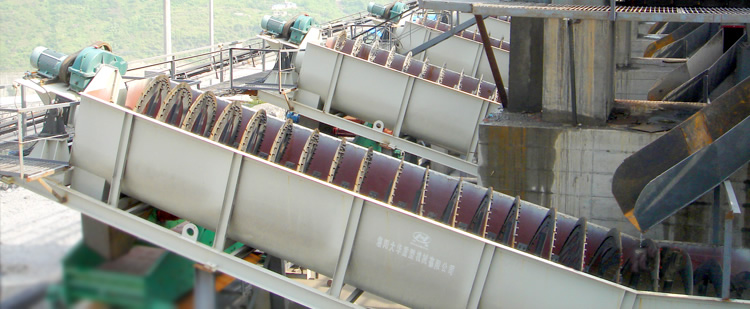Classification is one process that based on the different settling velocity of particles in the movement medium, the particle group is divided into two or more granularity levels, generally applicated in fine grained material. Among classification equipment, there are three types of medium movement form such as vertical rising flow, approximation horizontal flow and rotational motion. The medium can be water, also can be air. The classification using air as medium is called air classification.
When materials classified in rising water flow, the particles that settling velocity is large more than the rise water velocity will sunk in the classification equipment, become the sand setting product; the particles that settling velocity is less than the rise water velocity will be out from the top of the classifier by rising water flow, become the overflow product; the particles that settling velocity is equal to the rise water velocity, theoretically the distribution rate in the sand setting and the overflow will take up 50% respectively. This particle granularity is called separation size.

In the concentration plant, the classification is mainly applicated in:
(1) Preparation works before re-election operations (such as shaker) , the graded raw materials will be selected to reduce the effect of particle size to classification process.
(2) Work together with the grinding mill machine to control and check the progress of grinding products and separate qualified products in time, then reduce the crushing pieces.
(3) The raw ore or products will be operated by desliming and dewatering.
(4) Raw materials will be divided into different graded products so that to be suitable for different purposes.

